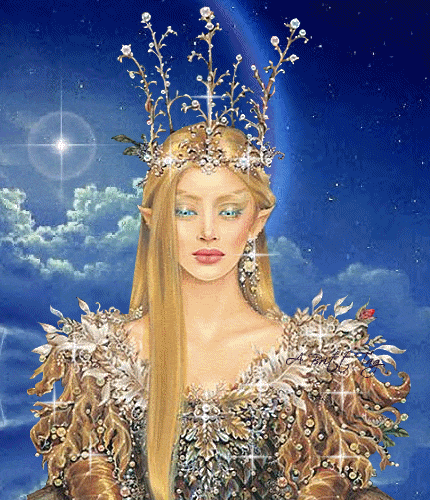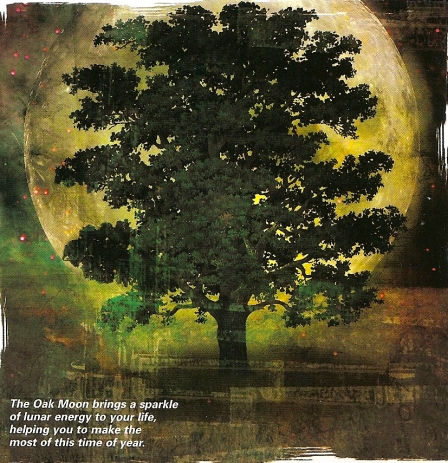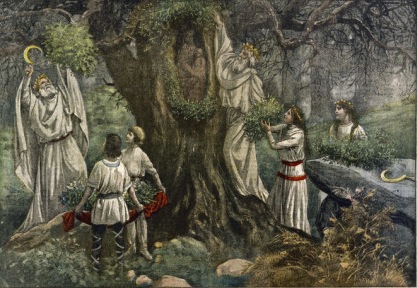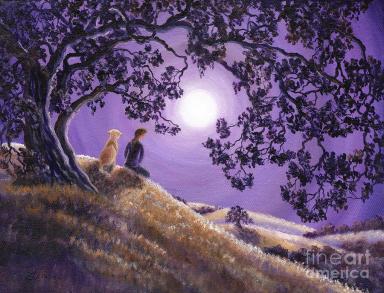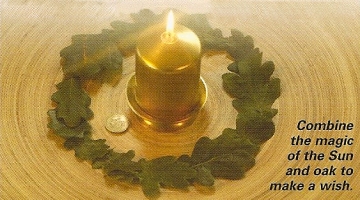
“Benten’s themes are luck, wealth and beauty. Her symbols are boats, dragons, guitars, snakes and saltwater.
As the Japanese Goddess steering the New Year’s Treasure Ship, Benten is a perfect figure to call on for financial improvements this year. She is the only Goddess of luck in Japan – the sole female among the Seven Gods of Fortune, and is referred to as queen of the seas and patroness of gamblers. Japanese woman invoke her to bring beauty and fortune into their lives; for she resides over love, eloquence, wisdom and the fine arts. She is the patroness of geisha and those who take joy in the arts. Benten is depicted as riding a gold dragon, playing a biwa (guitar), and sending out white snakes with her missives. Her robe bears a jewel that grants wishes.
To welcome Benten’s prosperity into your home, sprinkle a little saltwater on the threshold today. Or, to generate beauty within and without, soak in a bath of Epsom salts while listening to guitar music.
The Shigoto Hajime festival honors the beginning of the work week in Japan, where it is believed that good omens for work begin today. If you want to get a peek at how your employment will fare this year, try divination by dice (a traditional gambler’s tool). Hold one die in your hand, ask for Benten to provide a sign, then roll it. The results can be interpreted as follows:
(1) a negative omen;
(2) feeling torn between two good options;
(3) a good omen;
(4) financial security;
(5) not much material change, but improvements in interoffice relationships;
(6) an excellent omen; roll again If you get two more sixes, Benten’s treasures will be yours!”
(Patricia Telesco, “365 Goddess: a daily guide to the magic and inspiration of the goddess”.)
Patricia Monaghan tells us that “among the seven Japanese divinities of good luck, only one was a goddess: Benten, who brought inspiration and talent, wealth, and romance to those who honored her. Benten was also queen of the sea, a dragon woman who swam in state through her domain with a retinue of white snakes. In her dragon body she protected her devotees from earthquakes by mating with the monstrous snakes who thrashed under the Japanese islands. But she could also wear the form of a lovely human woman, and in this form she was usually portrayed, mounted on a dragon who was both her steed and her paramour” (p. 69).


Benten, also called Benzaiten “is the Japanese name for the Hindu goddess Saraswati. Worship of Benzaiten arrived in Japan during the 6th through 8th centuries, mainly via the Chinese translations of the Sutra of Golden Light, which has a section devoted to her. She is also mentioned in the Lotus Sutra and often depicted holding a biwa, a traditional Japanese lute, in contrast to Saraswati who holds a stringed instrument known as a veena. Benzaiten is a highly syncretic entity with both a Buddhist and a Shinto side.
Benzaiten as a female kami is known as Ichikishima-hime-no-mikoto. Also, she is believed by Tendai Buddhism to be the essence of kami Ugajin, whose effigy she sometimes carries on her head together with a torii. As a consequence, she is sometimes also known as Uga Benzaiten or Uga Benten. Shrine pavilions called either Benten-dō or Benten-sha, or even entire Shinto shrines can be dedicated to her, as in the case of Kamakura’s Zeniarai Benzaiten Ugafuku Shrine or Nagoya’s Kawahara Shrine.” [1]

“Japanese Goddess of Sea” by KatyDidsCards
In Japanese mythology “…Benten was said to have descended to earth where she met and married a dragon in order to stop him eating young children. Because of this, she is sometimes depicted as riding a dragon in art.
Another legend tells of how the goddess helped the young poet Baishu. He had found a poem written by a maiden and had fallen in love with her, despite never having seen what she looked like. Praying to the goddess for help, Benten arranged for the young poet and the girl to meet outside the shrine. Later, it turned out that the young girl Baishu had fallen in love with was actually the soul of the women he later met and married.

8-Armed Benzaiten (Jp. = Happi Benzaiten 八臂弁財天)
At Hoan-den (Enoshima Island in Japan)
Kanagawa Pretectural Asset, Kamakura Period
In art, Benten is sometimes shown with snakes. Some statues of her reveal eight arms, six of these which are raised and the hands holding different objects. These include a bow and arrow and two hands are folded in prayer” [2] as well as a sword, a jewel, a wheel, and a key.
From The White Goddess ~ Area of Influence:
Water, Words, Speech, Eloquence, Music, Knowledge, Fortune, Beauty

“Benzaiten (Benten) Shinto Goddess of Music & Luck” by LaPetiteMascarade
Pantheon: Japanese
Abode: Caverns
Animals: Dragons, Sea Serpents
Colours: Bue, Silver, White, Yellow
Crystal: Conch, Mother of pearl, Iron, Gold
Direction: East, West
Element: Air, Water
Musical Instrument: Lute
Offerings: Honey, Yellow flowers, Wild berries
Planet: Venus
Plant/Tree: Lotus, Waterlillies, Yellow flowers
Symbols: Sword, Bow and arrow, Wheel, Key, Axe, Spear, Pestle
Tarot Card: Cups
Time: Summer Solstice
Also known as: Benjaiten, Bensai-Ten, Benzai-Ten, Benzai-Tennyo, Benzaiten, Ichiki-Shima-Hime, Sarasvati, Zeniari, [3]; and according to Thalia Took, “Benzaiten is also linked to Kwannon or Kwan Yin, the sometimes female, sometimes male Bodhisattva of compassion in Buddhism.” [4]
Sources:
Encyclopedia of Ancient Deities, “Benten“.
Monaghan, Patricia. The New Book of Goddesses and Heroines, “Benten”.
Slayford-Wei, Lian. Humanities360.com, “The History and Significance of the Goddedss Benten“.
Took, Thalia. A-Muse-ing Grace Gallery, “Benzaiten“.
The White Goddess, “Benten – Goddess of everything that flows“.
Wikipedia, “Benzaiten“.
Suggested Links:
A-to-Z Photo Dictionary: Japanese Buddhist Statuary, “BENZAITEN, BENTEN“.
The Broom Closet, “Benten: Japanese Goddess of Eloquence“.
Encyclopedia of Ancient Deities, “Benten“.
Encyclopedia Britannica, “Benten“.
Lindemans, Micha. Encyclopedia Mythica, “Benten“.
Took, Thalia. A-Muse-ing Grace Gallery, “Benzaiten“.
 As we approach the summer solstice, the longest day of the the year, I find myself reflecting on my love of the long, hot days of summer. The bliss of lying on a beach caressed by the kisses of sun and breeze, with the promise of the cool inviting embrace of the sea by my side, is one of my most favorite forms of relaxation. Though the ozone layer has thinned and I can only indulge this desire in small doses now, I still love the feeling of the sun on my skin as She paints colored visions in my mind’s eye.
As we approach the summer solstice, the longest day of the the year, I find myself reflecting on my love of the long, hot days of summer. The bliss of lying on a beach caressed by the kisses of sun and breeze, with the promise of the cool inviting embrace of the sea by my side, is one of my most favorite forms of relaxation. Though the ozone layer has thinned and I can only indulge this desire in small doses now, I still love the feeling of the sun on my skin as She paints colored visions in my mind’s eye. She – how can I personify the sun as She when from across the world we hear only of Sun Gods and Moon Goddesses? Yet hidden deep in mythology one discovers that long, long ago the sun was worshipped as a goddess. From Aditi – Hindu Solar Goddess…
She – how can I personify the sun as She when from across the world we hear only of Sun Gods and Moon Goddesses? Yet hidden deep in mythology one discovers that long, long ago the sun was worshipped as a goddess. From Aditi – Hindu Solar Goddess…
